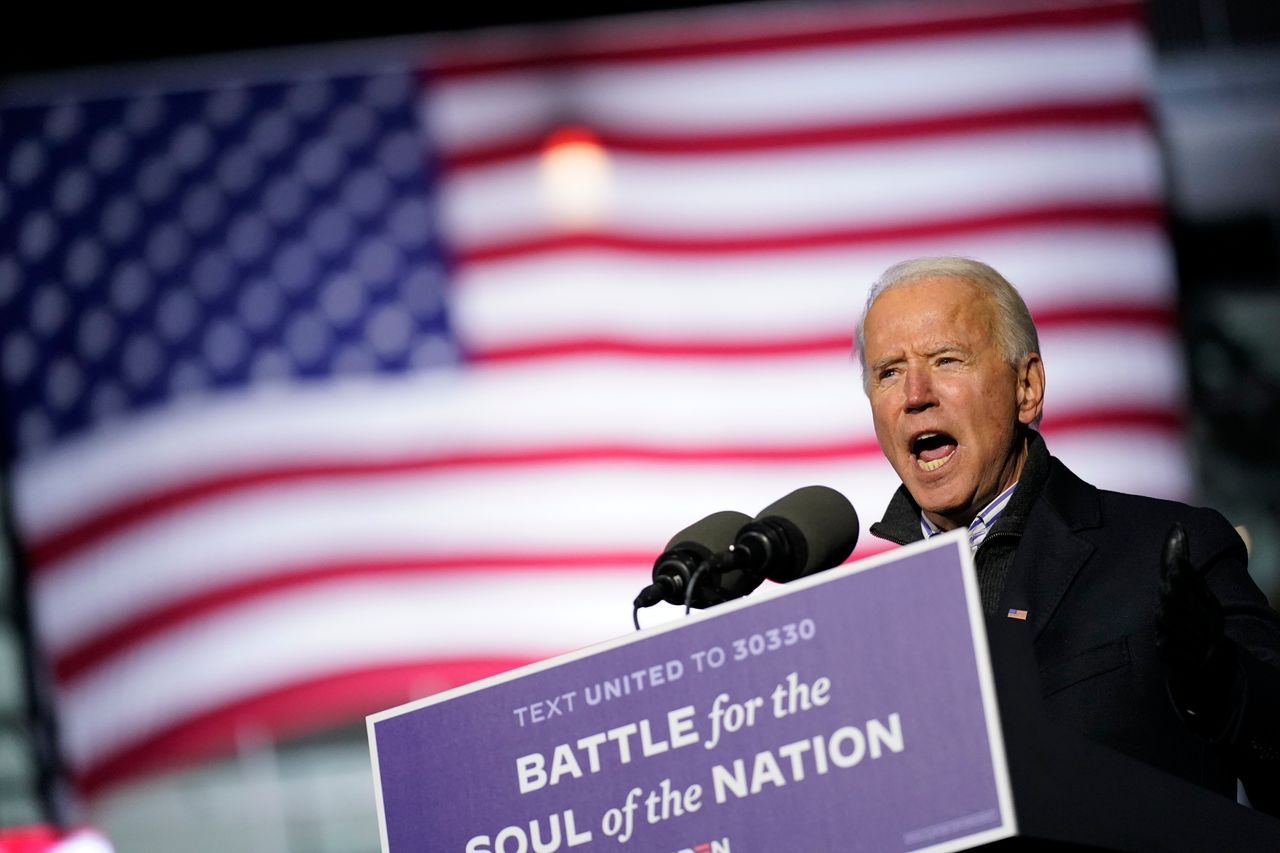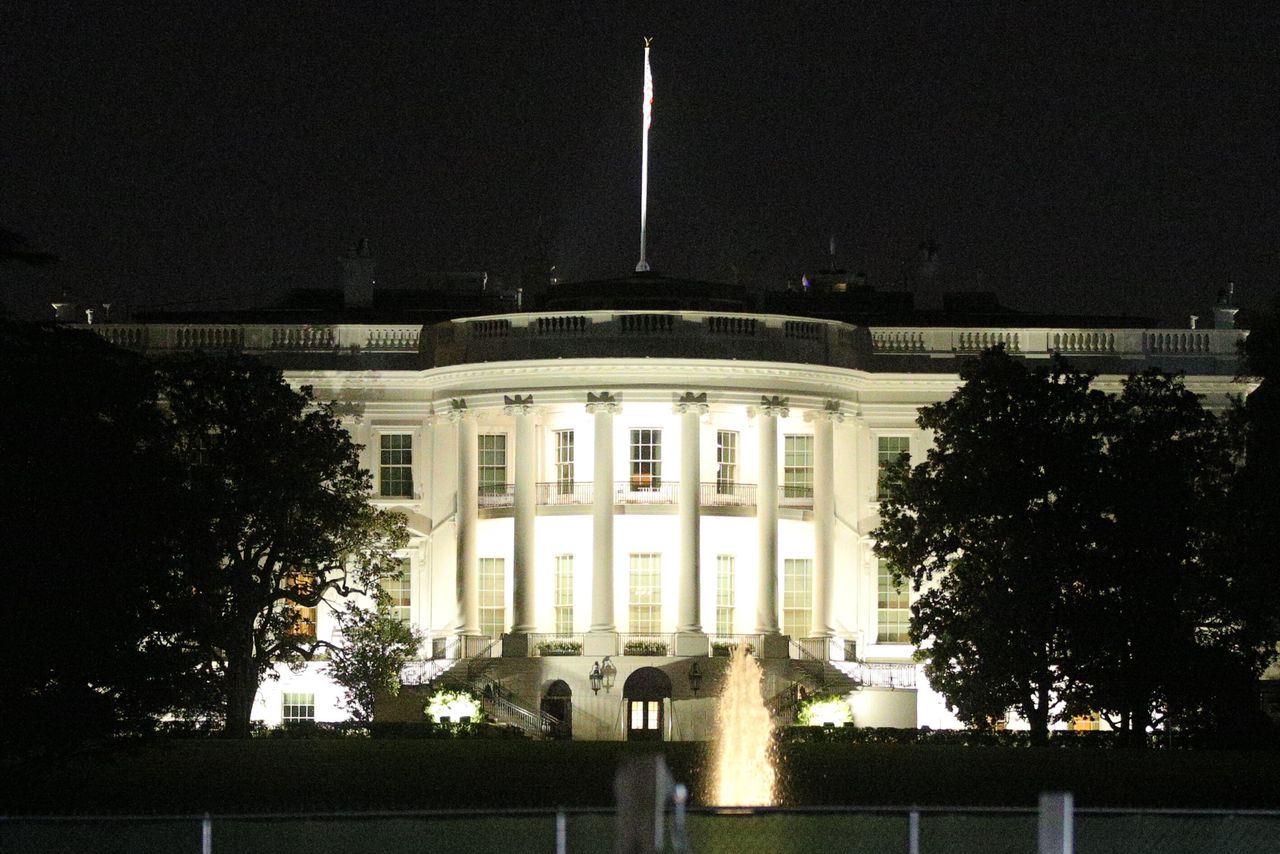Some 150 million Americans are likely to vote in the US election, but it’s the votes of just a few hundred thousand people in less than a dozen states that will decide who becomes president.
That’s thanks to the electoral college system. Put simply, this means there’s 538 electoral college votes spread over all the US states (and Washington DC), and the first candidate to get 270 votes wins. Each state is assigned a number of votes based on the size of its population and, in all but two states, the candidate with the most ballots “takes all”. Here’s a more detailed guide to how that works.
Many states are highly unlikely to change allegiance. New York and Washington have voted Democratic since 1984, and Alabama and Oklahoma have gone Republican in the last seven presidential elections. So it’s the “swing” states that matter.
🇺🇸 Running Mate is a US election podcast – just for Brits. Now available everywhere.
Donald Trump’s unexpected win in 2016 was the result of narrowly winning “safe” Democrat states in the Mid-West. Some 79,646 votes that made up Trump’s combined margin of victory in Pennsylvania, Wisconsin and Michigan in 2016. The polls suggest Joe Biden is winning not just nationally but also in these “toss-up” states. But it’s not just these “rustbelt” states you need to keep an eye on ...
These are the seven big states to watch:
FLORIDA
With its 29 electoral college votes, winning the “Sunshine State” is essential for the presidential hopefuls. Barack Obama won Florida in 2008 and 2012, and Trump defeated Hillary Clinton there in 2016 by just 1.2% of the vote.
To give it some context, the last Republican to win the White House without winning Florida was Calvin Coolidge in 1924. And in 2016 the election was decided by 113,000 votes from Florida.
A popular destination for retirees, much will depend on whether Trump faces a backlash from “seniors” over his handling of the pandemic.
If Biden wins Florida, it’s going to be very difficult for Trump to put together the 270 electoral college votes necessary to win. A Trump win narrows Biden’s path, for sure, but he still has more routes to the White House.
Electoral votes: 29
Polls close: 7pm eastern US/12am UK (though parts of the state close later)
2016: Donald Trump 49.0% Hillary Clinton 47.8%
NORTH CAROLINA
The southern state has voted reliably Republican for decades, with George W Bush taking the state by double-digit margins in the 2000 and 2004 presidential elections.
But in 2008 Obama snatched the state for the Democrats for the first time since 1976. The Republicans narrowly won it back in the next two elections — Mitt Romney in 2012, Trump in 2016. But his year polls suggest Biden could nudge the state and its 15 electoral votes back into the Democratic column, though the result – as at recent elections – could be very close.
North Carolina and Florida are the two swing states most likely to report prompt results on election night, and as such will give an early indication of how both Biden and Trump are faring.
Electoral votes: 15
Polls close: 7.30pm eastern US/12.30am UK
2016: Donald Trump 50.5% Hillary Clinton 46.8%

OHIO
Since 1964, whoever has won Ohio has gone on to become president – the longest uninterrupted streak of any of the “bellwether” states.
In 2016, Trump enjoyed a comfortable victory Clinton by eight percentage points. In 2020 the polls suggest the race is too close to call.
As with Florida, a win here is probably more crucial for Trump than Biden in terms of making it to the winning post.
Electoral votes: 18
Polls close: 7.30pm eastern US/12.30am UK
2016: Donald Trump 51.8% Hillary Clinton 43.7%
MICHIGAN
One of the bricks in the “blue wall” of states that voted Democrat at every presidential election from 1992 to 2012, until Trump broke through.
Trump’s victory in 2016 was minuscule – by just 0.2% of the vote, or a mere 10,704 ballots – but symbolised the scale of his success in wooing working-class voters away from Clinton, particularly in a state that Obama had carried by nine percentage points in 2012.
Polls have put Biden consistently ahead of Trump for the past few months.
Electoral votes: 16
Polls close: 8pm eastern US/1am UK
2016: Donald Trump 47.6% Hillary Clinton 47.4%
PENNSYLVANIA
Another part the traditionally Democratic “blue wall”.
Trump turned Pennsylvania into a swing state in 2016 after another narrow victory: his margin of victory over Clinton was just 0.7% of the vote.
Pollsters see Pennsylvania as close to a “must-win” for Trump, leaving him a very narrow path to 270 without it. But Biden could afford to lose here.
Pennsylvania is Biden’s home state – he was born in the city of Scranton – and he has enjoyed a small but steady lead in Pennsylvania’s polls for several months.
Electoral votes: 20
Polls close: 8pm eastern US/1am UK
2016: Donald Trump 48.6% Hillary Clinton 47.9%

WISCONSIN
While Trump won four years ago, it was with 2,000 fewer votes than Republican candidate Mitt Romney amassed in 2012 when he lost to Obama, indicating that it was lower turnout, not enthusiasm for Trump, that was key to his victory.
Clinton faced criticism in the aftermath for spent relatively little time there, as was the case in Michigan, which she also lost for the Democrats.
As is the case with Pennsylvania and Michigan, the result in Wisconsin might not be clear for several days, thanks to the volume of postal and early votes that will need to be sorted and counted.
This could mean that the overall winner of the election is not known for some time – though both candidates might try and mount legal challenges to pause, extend or even halt the counting.
Electoral votes: 10
Polls close: 9pm eastern US/2am UK
2016: Donald Trump 47.8% Hillary Clinton 47.0%
ARIZONA
The second “Sunbelt” battleground. The reason Biden has more paths to the White House than Trump is thanks to states like Arizona.
No Democrat has won Arizona since Bill Clinton in 1996, and in 2016 Trump beat Hillary Clinton here by five percentage points.
But this year, Biden has turned it into a swing state, reflected in a run of opinion polls that have put him either ahead of or level with Trump.
Arizona does not offer as many electoral votes as other swing states but they could be vital for Biden’s chances were he to lose in places like Florida.
Electoral votes: 11
Polls close: 9pm eastern US/2am UK
2016: Donald Trump 49.0% Hillary Clinton 45.5%
... but also watch ...
GEORGIA
No Democrat has won Georgia since Bill Clinton in 1992, and Trump won it by a comfortable six percentage points in 2016.
Yet in 2020 Georgia has become the most unexpected swing state of them all. Biden has steadily closed the gap on Trump in the polls, eventually drawing level and occasionally pulling ahead.
Wins for Biden in places like Georgia and North Carolina would knock out states that are vital for Trump’s re-election.
Electoral votes: 16
Polls close: 7pm eastern US/12am UK
2016: Donald Trump 51.0% Hillary Clinton 45.9%

TEXAS
The state has been reliably Republican for the past four decades-plus.
But Democrat candidates have been doing better in the “lone star state”, a reflection of its changing demographics, and a few polls in the spring had Biden just a few percentage points behind Trump – and the trend that has continued.
A long shot for the Democrats, but Biden’s running mate Kamala Harris has been campaigning there, a sign his campaign hasn’t given up all hope of an unexpected win.
Electoral votes: 38
Polls close: 8pm eastern US (Two western counties in Texas are an hour behind the rest of the state)/1am UK
2016: Donald Trump 52.5% Hillary Clinton 43.5%
MINNESOTA
The Democratic candidate has won Minnesota in 11 straight presidential elections, but Trump has fixated on the state since his narrow loss to Clinton there four years ago.
However, Biden’s poll lead remains solid, and momentum nationally is not in his favour, so his prospects there are dimming.
Electoral votes: 10
Polls close: 9pm eastern US/2am UK
2016: Donald Trump 45.3% Hillary Clinton 46.9%
